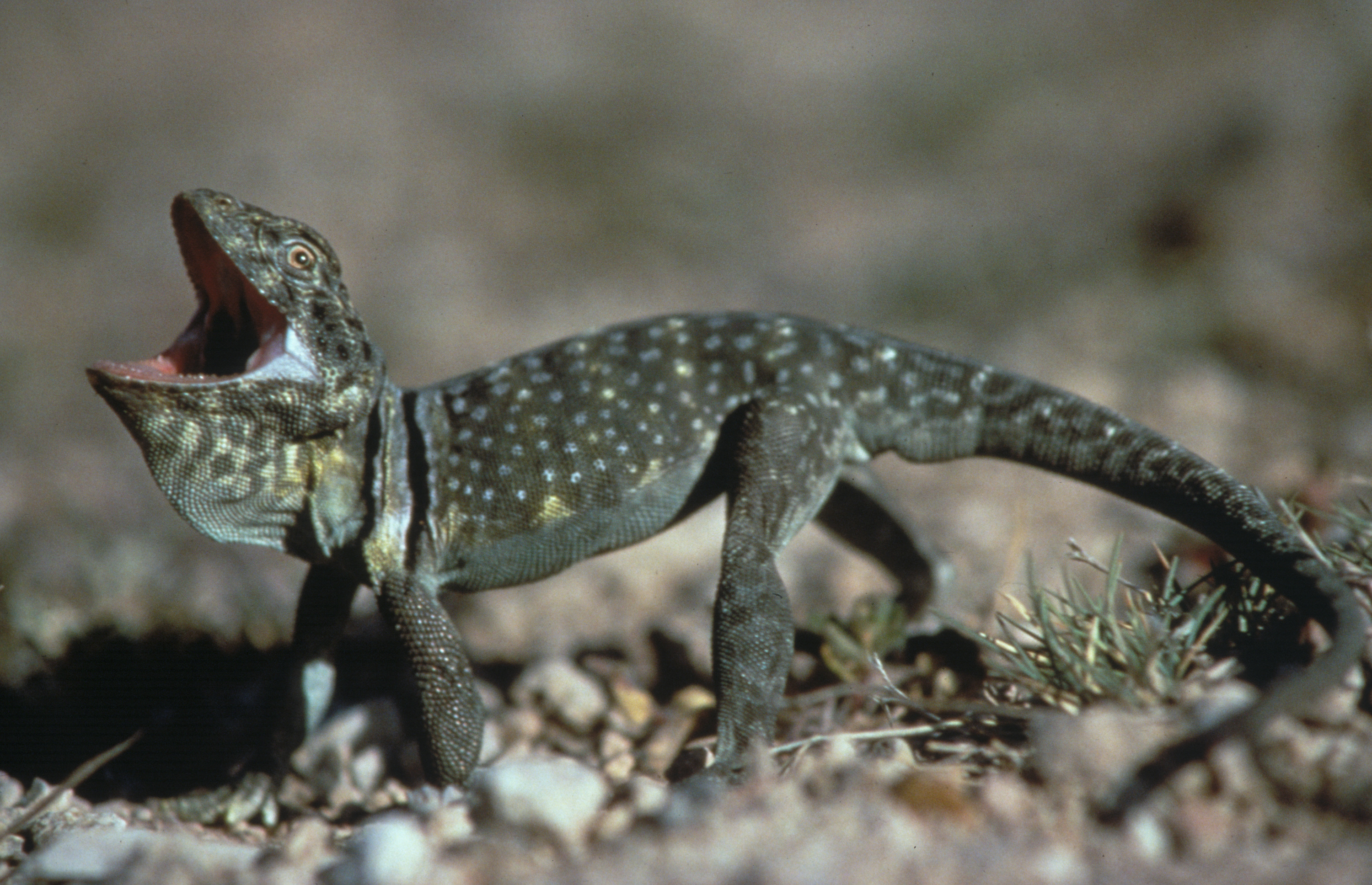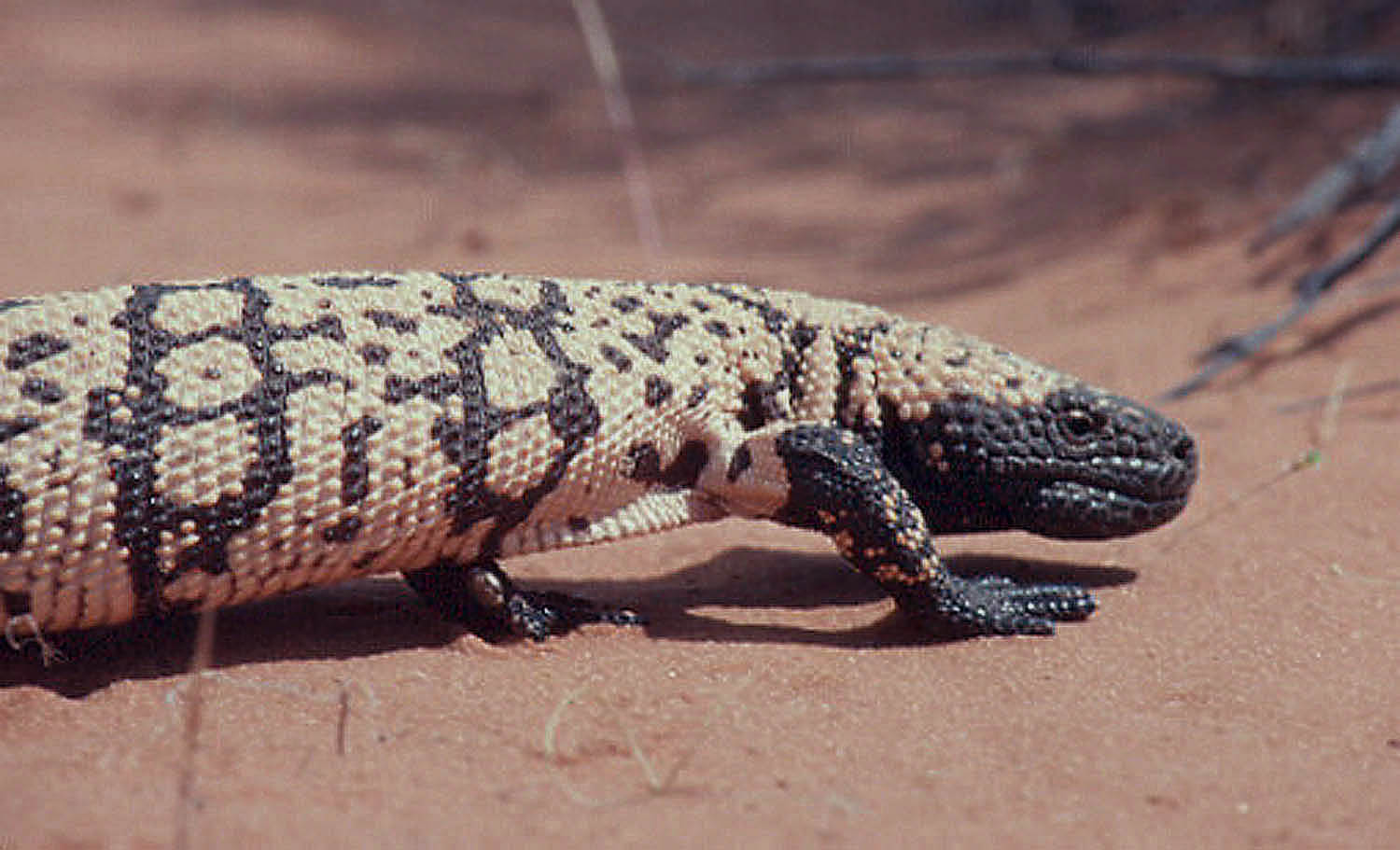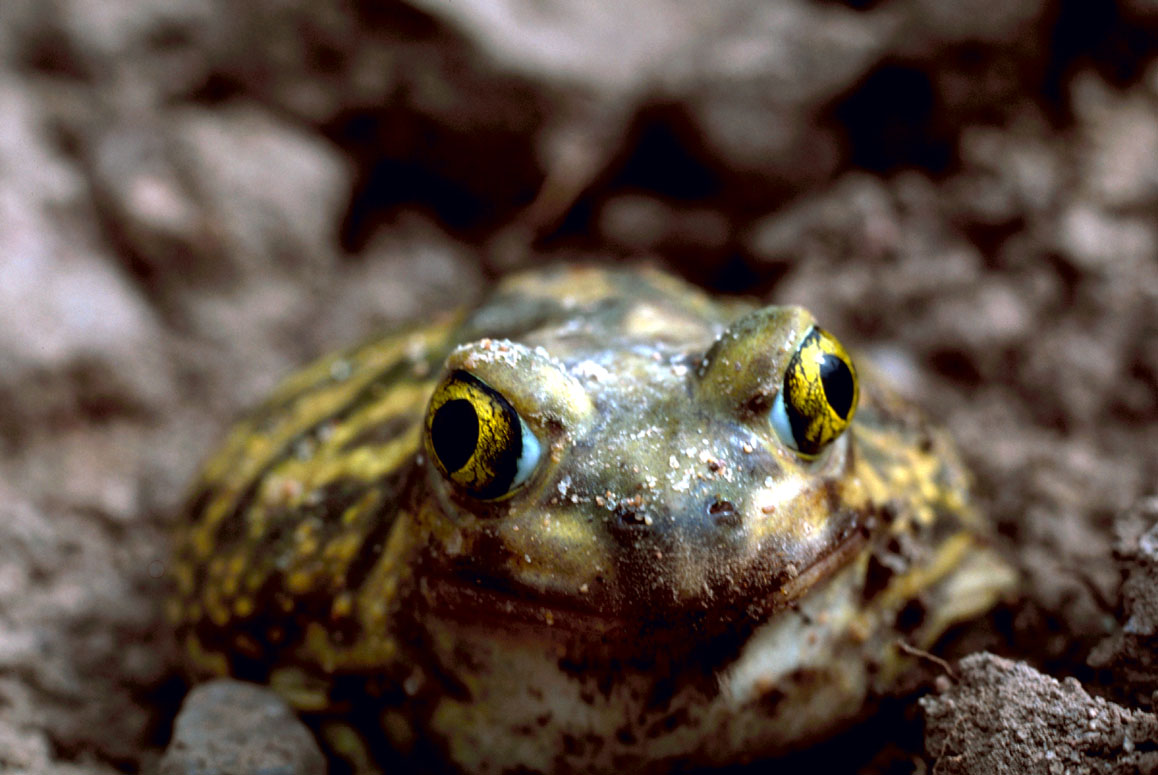
Courtesy US NPS
Jacob W. Frank, Photographer
Collared lizards are among the more common reptiles of the arid Southwest, and also one of the more interesting ones. They’re known for their sprinting ability, reaching speeds of 16 mph when they feel threatened, often running solely on their hind legs. They’re also highly territorial – if two males are placed in the same cage, they’ll fight to the death. But what captured my interest on that warm spring morning was their flashy coloration.
More to the point, I was thinking that it didn’t seem to make sense for a desert animal to flaunt flamboyant colors. Most other desert lizards in Utah – whiptail and sagebrush lizards, side-blotched and fence lizards – are content to blend into the scenery. But male collared lizards look more at home in the jungle than in the desert, with blueish-green speckled bodies and tails, and a bright yellow head. Females are green, too, although their colors are more muted and often brownish.
It’s not uncommon for males and females of a species to sport different colors. The scientific term for this is sexual dimorphism. You see it often in birds like songbirds and ducks. Males will flash bright hues – the sublime sky blue of a mountain bluebird, the blazing orange of a Bullock’s oriole, the exuberant red, black, and yellow of a Western tanager – while females of the same species tend to be grayish or brown or dull yellow, with just a hint of the male’s glory.
This makes sense if the main purpose of coloration is camouflage. Female lizards are vulnerable to predators when bearing or caring for young, so there’s a survival advantage to matching their environment. First-year males are often colored much like females – helpful as they learn to fend for themselves. But shouldn’t the adult males want to blend in, too?
It seems male coloration also has to do with babies, but in a different way. A conspicuous male is more likely to find a mate. He’s visible. He stands out. A female lizard can find him when she needs him. Brightness also helps these lizards in another way. Remember how male collared lizards are viciously territorial? Conspicuous, vivid color helps them avoid unexpected confrontations with other males.
Of course, there’s a tradeoff here. If female lizards can easily find a male, so can predators.
Some years ago, scientists took some toy lizards, painted them in collared-lizard colors, set them out on rocks in classic lizard poses, and watched to see what would happen. As we might expect, they found that if a lizard stands out in contrast to its environment, it’s more likely to be attacked by snakes, birds, or rodents. So it’s a good thing that in addition to being fancy dressers, collared lizards are also world-class sprinters.
I’m Mark Brunson, and I’m wild about Utah’s colorful and camouflaged animals.
Credits:
Images Courtesy US NPS, Jacob W. Frank, Photographer, https://www.nps.gov/media/photo/view.htm?id=5B13C294-155D-451F-67F7-7D12491DF54D
Featured Audio: Courtesy & © Kevin Colver, https://wildstore.wildsanctuary.com/collections/special-collections and Shalayne Smith Needham https://upr.org/
Text: Mark Brunson, https://www.usu.edu/experts/profile/mark-brunson/
Additional Reading: Mark Brunson, https://www.usu.edu/experts/profile/mark-brunson/
Additional Reading
Other pieces by Mark Brunson: https://wildaboututah.org/?s=brunson
Division of Wildlife Resources. Eastern collared lizard (Crotaphytus collaris). Utah species field guide. https://fieldguide.wildlife.utah.gov/?species=crotaphytus%20collaris
Husak, J. F., Macedonia, J. M., Fox, S. F., & Sauceda, R. C. (2006). Predation cost of conspicuous male coloration in collared lizards (Crotaphytus collaris): an experimental test using clay‐covered model lizards. Ethology, 112(6), 572-580. https://onlinelibrary.wiley.com/doi/full/10.1111/j.1439-0310.2005.01189.x
https://sci-hub.se/https://doi.org/10.1111/j.1439-0310.2005.01189.x
Strand, Holly, The Lizard and His Tail, Wild About Utah, June 11, 2009, https://wildaboututah.org/the-lizard-and-his-tail/






